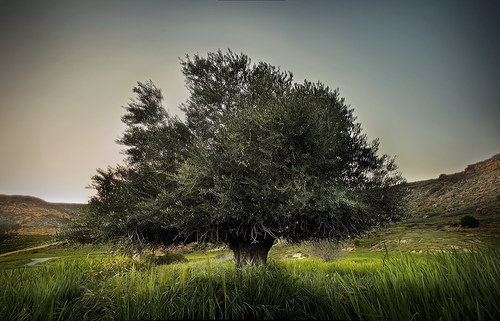Source of Sustenance
Olive trees are plants. This means they are autotrophs or "self-feeders". Also known as producers these organisms produce their own food using sunlight, carbon dioxide and water.
Plants use photosynthesis to create sugars to use for energy. Other organisms that do not make their own food will consume plants or organisms that have eaten plants to get the energy they need.
All the parts of a plant that are green contain a special structure called the chloroplast. This is where photosynthesis occurs in plants. Most of the photosynthesis occurs in the leaves. The green color of the leaves is caused by chlorophyll a pigment inside the chloroplast that absorbs light that plays a major role in photosynthesis.
Along with sunlight, photosynthesis needs water and carbon dioxide. Carbon dioxide enters the leaves through small openings called stomata. The roots of the tree absorb water and send it through the xylem of the plant to the veins in the leaf.

Two cycles occur making up photosynthesis. The first cycle is known as the light reactions. Water is split creating oxygen and hydrogen ions. The hydrogen ions can be used for their electrons. An electron acceptor takes the electrons from the hydrogen ions when the sunlight drives the change. ATP or the energy in cells is also made in this cycle.
Then there is the Calvin cycle. The Calvin cycle uses carbon dioxide and the energy made in the light reactions to create sugar. Sometimes the Calvin cycle will be called the dark reactions because no light is required. The sugar produced provides energy for both the plant and organisms that consume the plant.
